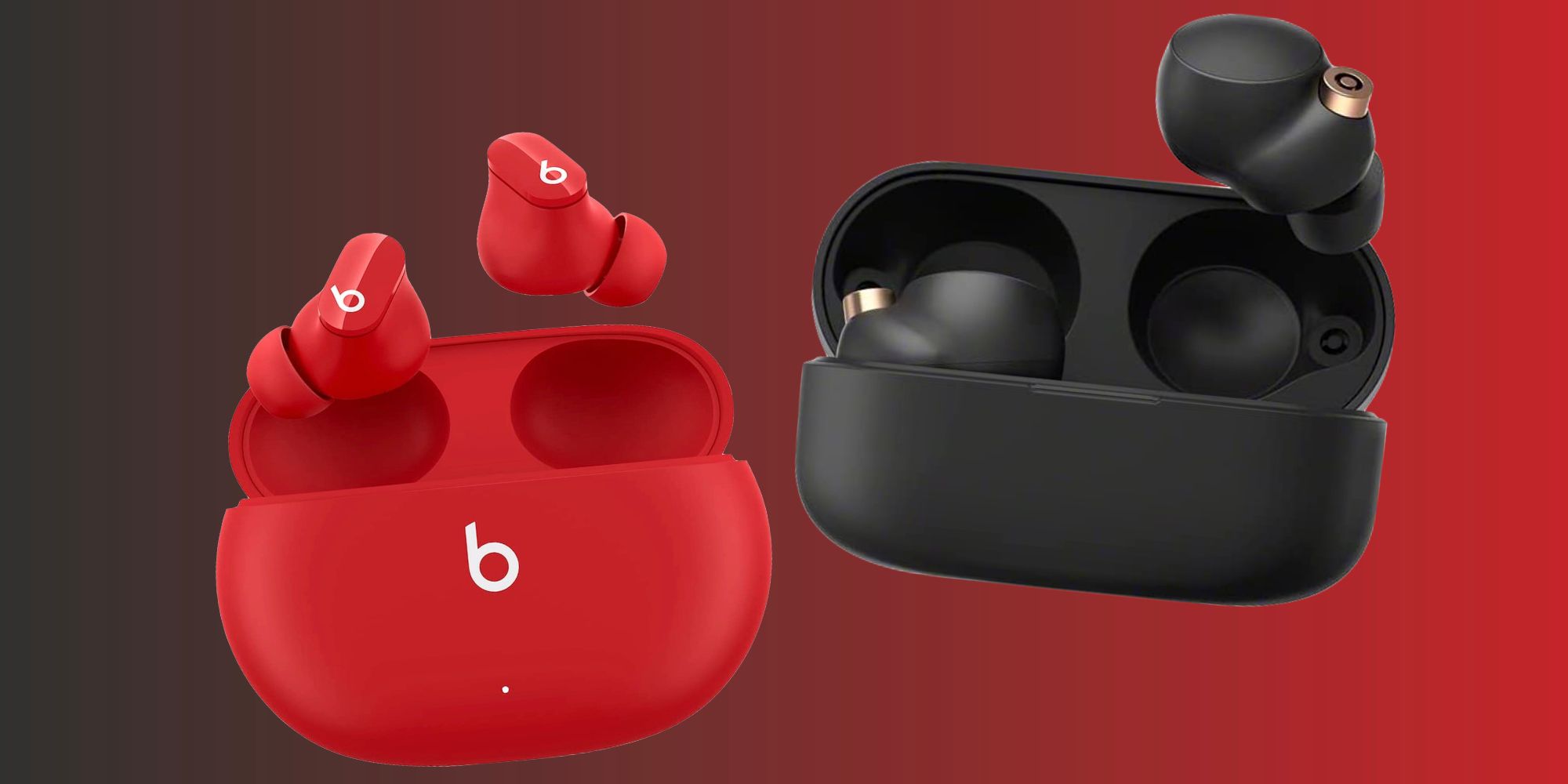Beats Studio Buds Vs. Sony WF-1000XM4: Should You Spend $149 Or $279?

Shopping for true wireless earbuds? Two of the most compelling options right now are the Sony WF-1000XM4 and the Beats Studio Buds from Apple. Both pairs of earbuds bring a lot to the table for their respective price tags, but with $130 separating them, are Sony’s buds really worth that much more cash?
Sony and Beats are both seasoned pros in the consumer audio space, though their approach to true wireless earbuds is distinctly different from each other. On one hand, Sony has released numerous models across a variety of price tags. It has budget-friendly earbuds for well under $100, ones that are designed specifically with sports/fitness in mind, and the WF-1000XM4 that stand out as the company’s flagship earbud offering. Beats is still relatively new to the true wireless space, with the Studio Buds only being its second attempt at the niche. With that smaller amount of experience in mind, it’s impressive how well the Studio Buds can keep up with the WF-1000XM4.
From a design perspective, both options have a lot to like. The Beats Studio Buds are lightweight, comfortable, and feature a unique stem on the end of either earbud. In addition to giving users a small area to grab for adjusting their fit or taking the earbuds out of the case, the end of the stem also houses the excellent playback button. Per Apple, this can be used for playing/pausing songs, answering phone calls, and even turning on ANC. The Sony WF-1000XM4 are similarly great, also featuring a compact design, excellent comfort, and a touch surface on the back of either bud for playback controls. Both earbuds have an IPX4 water-resistance rating, USB-C charging, and come in multiple color options. The only design advantage of the WF-1000XM4 is that Sony’s charging case also supports Qi wireless charging, where the Beats Studio Buds do not.

Moving away from the design of the earbuds, the advantages of the Sony WF-1000XM4 become easier to see. Take sound quality, for example. For their price, the Beats Studio Buds sound fantastic. They’re nicely balanced, deliver a very clear audio profile, and kick out a decent amount of bass when a song demands it. It’s a great experience for $149, but when stepping up to the WF-1000XM4, that $130 price increase is on full display. Sony’s earbuds are more detailed, deliver bigger bass, and support Sony’s LDAC codec for listening to compatible songs at 990kbps. Both earbuds support Dolby Atmos/spatial audio on select music streaming apps, but at the end of the day, the WF-1000XM4 stand out with the best listening experience.
This point is further exacerbated when it comes to active noise canceling. This feature is found on the WF-1000XM4 and Beats Studio Buds, but Sony’s execution is more impressive once again. ANC on the Studio Buds tends to quiet surrounding noises rather than silence them completely, making them less ideal for especially noisy surroundings. By comparison, the WF-1000XM4 are considered to deliver some of the most powerful noise canceling of any earbud on the market. Listening to music with ANC tends to require a great deal of battery life, and here, Sony again comes out ahead. With ANC enabled, the Beats Studio Buds deliver up to 5 hours of continuous playback and 15 hours of total endurance when including the case. By comparison, the WF-1000XM4 get up to 8 hours of playback and 24 hours of total battery with its case.
It’s safe to say that the Sony WF-1000XM4 are more capable earbuds, but given the $279 asking price, that’s to be expected. They’re almost double the price of the Beats Studio Buds, and for that amount of money, they have a lot to offer. They sound better, ANC is more effective, battery life is longer, and a heap of smaller features help round out the experience — such as a speak to chat feature and in-ear detection for automatic play/pause control. For someone interested in the WF-1000XM4 but can’t justify the high price tag, the Beats Studio Buds hold their own for $149. They aren’t as technically impressive and lack a few features, but the overall experience of using them is still quite strong. They sound good, the battery lasts long enough for most use cases, and just having active noise canceling at this price — even if it’s not the most effective — is worth celebrating. No matter which earbuds someone ends up choosing, they can rest assured they’re getting one of the best options for their respective price points.
Source: Apple
from ScreenRant - Feed https://ift.tt/3eyJiF1
via Whole story

Post a Comment